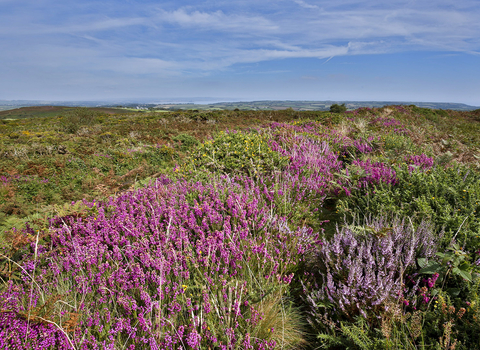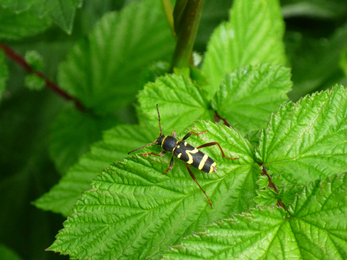County Wildlife Sites are the most significant areas of semi-natural habitat in Cornwall outside statutory protected sites such as Sites of Special Scientific Interest (SSSIs) and Special Areas of Conservation (SACs).
There are currently 498 County Wildlife Sites in Cornwall covering nearly 33,000 hectares. This is nearly 10% of the county’s land area and is under both public and private ownership. County Wildlife Site boundaries are shown on the interactive map on the Cornwall Council website.
Bluebells at one of Cornwall's County Wildlife Site, Image by Sue Hocking
What are County Wildlife Sites?
County Wildlife Sites range from small copses and linear features like river valleys, to ancient woodlands, large moors and wetlands. Many of these are Biodiversity Action Plan (BAP) habitats; these are habitats which are considered of conservation significance either locally or nationally. Cornwall has its own list of BAP habitats.
County Wildlife Sites were identified and selected during the 1980s and 1990s using a combination of aerial photograph data, past and local knowledge, and where possible, ground based surveys. They were selected because of their high nature conservation value. Selection was based on distinctive, important or threatened species and habitats, in either a national, regional or local context and aimed to link and buffer other important areas for nature conservation, such as SSSIs. For more information, download a 'County Wildlife Sites' leaflet and the 'County Wildlife Sites Criteria for Cornwall' document from the downloads and further information section at the bottom of this page.
Why is Cornwall Wildlife Trust concerned about County Wildlife Sites?
Unlike Sites of Special Scientific Interest (SSSIs) or Special Areas of Conservation (SACs), County Wildlife Sites are non-statutory designations. This means they have no legal protection and that there is no legal obligation on landowners to preserve or take care of their County Wildlife Sites. However, there are planning constraints on County Wildlife Sites and these are recognised in Local Development Plans.
As a result of this limited protection, many County Wildlife Sites have been lost or become degraded for a number of reasons including:
- Neglect such as wetland and grassland left to scrub over
- Inappropriate management including the creation of ponds and lakes in wetlands, overgrazing and undergrazing
- Intensification of agriculture including loss of traditional practices beneficial to wildlife such as hay meadow management
- Pollution
- Development
- Fragmentation, leading to wildlife becoming isolated
- Recreation
- Vandalism
How can Cornwall Wildlife Trust help County Wildlife Site owners?
Cornwall Wildlife Trust works with County Wildlife Site landowners to enable them to manage important wildlife habitats sensitively. In partnership with Cornwall Council we are able to provide free site visits and advice to County Wildlife Site owners and managers.
These visits include a full survey of wildlife habitats on the site. The landowner is then provided free of charge with a detailed report. These reports include desk study information highlighting notable species or habitats previously recorded in the area, and identify those habitats and species noted during the survey. The report also provides management recommendations for maintenance and enhancement of these habitats and signposts landowners to possible funding sources for habitat management.
What are the benefits and implications of owning a County Wildlife Site?
- For substantial changes in land use of a County Wildlife Site, local authorities will take wildlife into account, together with all other planning considerations.
- County Wildlife Sites can attract grant aid through DEFRA’s Environmental Stewardship Schemes.
- Free management advice and wildlife surveys for County Wildlife Site owners.
- As the County Wildlife Site designation is non-statutory, no additional restrictions over and above the current EIA (agriculture) regulations are placed on agricultural operations.
- Other than in Local Development Plans, site details are not publicised.
- Access is by permission of the landowner only and no rights of access are created.
Find out more and explore the County Wildlife Sites through our online hub.
Online hub for County Wildlife Sites


